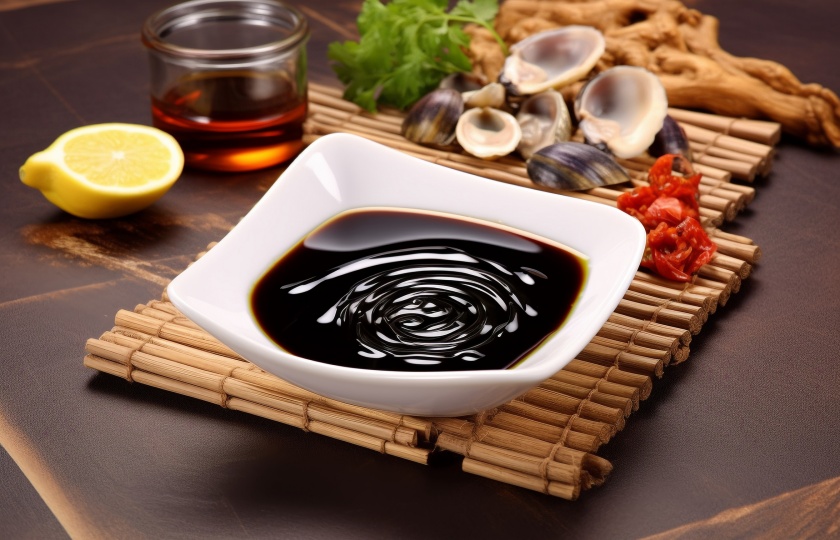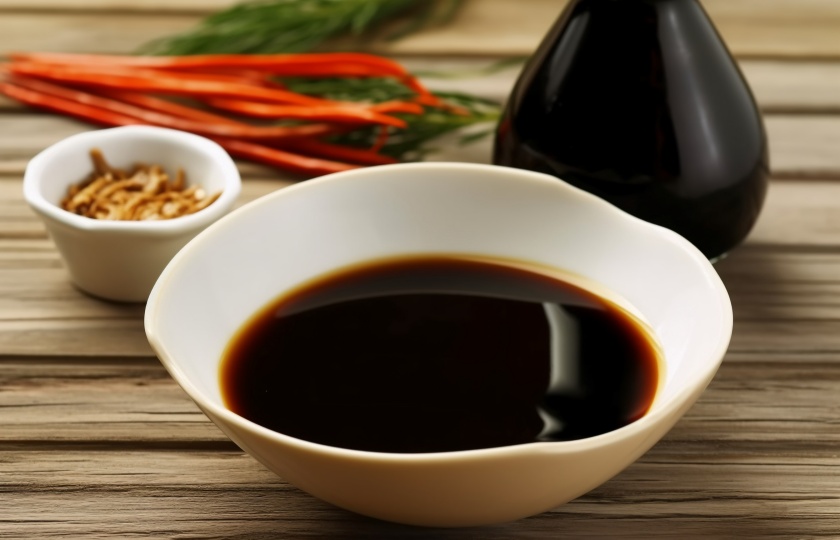Is Mint Good in Soy Sauce? Tips and Ideas

Can the cooling sensation of mint and the savory taste of soy sauce, which seem like two completely different flavors, become a perfect pairing?
Is mint suitable for making soy sauce?
Yes, mint can be used to create flavored soy sauce, although it’s not a traditional ingredient. It adds a refreshing aroma to soy sauce, especially when making special dipping sauces or flavored versions.
How to use it:
Cold infusion: Gently crush fresh mint leaves and place them in soy sauce. Seal and let it sit for a while, allowing the mint’s fragrance to infuse. This works well with light dishes.
Warm infusion:Add a few mint leaves to heated soy sauce for a short time. This releases the aroma and imparts a subtle herbal taste, ideal for dips or cold dishes.
The refreshing scent of mint paired with the savory depth of soy sauce is a bold and interesting combination that adds creativity to classic flavors. However, use sparingly to avoid overpowering the original taste of the soy sauce.
What types of mint are best paired with soy sauce?
There are several types of mint that pair well with soy sauce, each bringing a different flavor profile that can add depth and uniqueness to the taste of the soy sauce. Here are three common types of mint that are excellent choices:
Mint - The Classic Choice
This is a very classic type of mint with a fresh, clean, and cooling flavor. The refreshing aroma of mint pairs harmoniously with the savory, salty taste of soy sauce. It’s commonly used in traditional soy sauces, dipping sauces, or marinades. If you want to preserve the classic flavor of soy sauce, mint is the best option.
Spearmint - A Sweeter Alternative
If you prefer a sweeter mint, try spearmint. It has a milder taste with a hint of sweetness. Spearmint is ideal for those who enjoy a gentler mint flavor and is perfect for making sweeter soy sauces or sauces and seasonings that require a touch of sweetness.
Lemon Mint - Citrus Flavor
Lemon mint has a strong citrus aroma that adds a refreshing sensation to soy sauce. Its bright flavor blends perfectly with the salty umami of soy sauce, making it especially suited for pairing with seafood dishes or for use in sauces and marinades to enhance the freshness of the dish.

Fresh mint vs. dried mint: Which goes better with soy sauce?
Fresh mint is better for pairing with soy sauce as it brings a fresher, more herbaceous aroma.
The natural fragrance of fresh mint blends well with soy sauce, adding complexity to dishes, especially in salads or dipping sauces. Its vibrant scent enhances the salty, savory flavor of soy sauce. However, proper storage is crucial to maintain its freshness and flavor.
Dried mint is easier to store and has a more concentrated flavor, but its aroma isn’t as fresh as that of fresh mint. It’s better suited for heated soy sauce or making seasonings that need a longer shelf life. If you want the most natural flavor, fresh mint is the best choice, but if storage is limited, dried mint is a convenient alternative.
What are some common mistakes when adding mint to soy sauce?
Temperature too high or too low
Too high temperature: If the soy sauce is heated to a temperature higher than 85°F (29°C), the essential oils in mint will evaporate, causing the fragrance to fade and making the soy sauce taste flat and dull.
Too low temperature: In cold environments (below 70°F / 21°C), the mint's aroma will not be released properly, and it won't blend well with the soy sauce, resulting in a weak flavor.
Incorrect amount of mint
Too much mint: Excess mint will overpower the salty, savory flavor of the soy sauce, making the seasoning too herbal and affecting the overall balance of the dish.
Too little mint: Not enough mint will fail to enhance the soy sauce's flavor, and the soy sauce might taste no different from the regular version.
Wrong ratio of dried mint to fresh mint
The ratio of fresh mint to dried mint should be reasonable. Dried mint has a more concentrated flavor, so the amount should be half that of fresh mint; otherwise, the seasoning will be too intense.
Suggestions
When adding mint to soy sauce, control the temperature between 70°F and 85°F (21°C to 29°C). Use a ratio of 1 tablespoon of fresh mint to 1/4 cup of soy sauce, and reduce the amount of dried mint by half. Through experimentation, find the right balance for your taste to create a fragrant and savory mint soy sauce without making the common mistakes.

Is mint soy sauce suitable for seasoning cold dishes?
Yes, mint soy sauce is perfect for seasoning cold dishes.
The refreshing aroma of mint pairs well with the savory taste of soy sauce, adding a unique flavor layer to cold dishes. For example, it works wonderfully with chilled cucumbers, mung bean jelly, or black fungus, enhancing their overall freshness.
To prepare, gently bruise fresh mint leaves and infuse them in soy sauce for a period to allow the aroma to blend fully. For a stronger flavor, mint leaves can also be added to warmed soy sauce and then cooled before use. Mint soy sauce is not only ideal for cold dishes but also makes a delightful dipping sauce for spring rolls, sushi, and more.
Is mint soy sauce a good match for seafood?
Yes, the two are an excellent pairing.
The fresh herbal aroma of mint combined with the savory flavor of soy sauce enhances the natural taste of seafood, especially fish and shellfish. The cooling sensation of mint helps balance any fishy notes, making the dish taste fresher and more layered.
For example, mint soy sauce works wonderfully with sashimi, grilled shrimp, and seafood salads. It infuses these dishes with a unique flavor that highlights their natural taste while adding a refreshing twist. This combination is particularly delightful in the summer, as the mint brings a cooling effect to seafood dishes.
In short, mint soy sauce and seafood make a classic pairing—if you haven’t tried it yet, it’s worth a shot!























